Table of content
Hot pot, a beloved culinary tradition enjoyed across Asia and beyond, is more than just a meal—it’s a communal experience that brings people together around a simmering pot of flavorful broth. Whether you’re a seasoned hot pot enthusiast or a newcomer to this steamy adventure, the key to an unforgettable feast lies in selecting the right ingredients. From tender meats to crisp vegetables and aromatic spices, the possibilities are endless. This guide will explore the essential ingredients for a balanced, delicious, and memorable hot pot experience, ensuring every dip, sizzle, and slurp is a delight.
The Foundation: Broth Basics
Before diving into ingredients, it’s crucial to understand the broth’s role. The broth sets the tone for the entire meal, acting as a canvas for flavors. Common types include:
- Spicy Sichuan Broth: Infused with chili peppers, Sichuan peppercorns, and garlic, this fiery option is a favorite for those craving heat.
- Mild Tonkotsu (Pork Bone Broth): Rich and creamy, this Japanese-style broth offers a comforting umami base.
- Herbal Chicken Broth: Light yet aromatic, often featuring jujube dates, goji berries, and ginger.
- Tom Yum Broth: A Thai-inspired choice with lemongrass, lime leaves, and chili for a tangy kick.
The broth you choose will influence which ingredients shine brightest. For example, delicate seafood pairs beautifully with mild broths, while hearty meats thrive in robust, spicy bases.
Proteins: The Stars of the Show
No hot pot is complete without a variety of proteins. Here’s a breakdown of must-have options:
Meats
- Beef: Thinly sliced ribeye or sirloin is classic. For added flavor, opt for marinated options like Korean galbi (short ribs) or Chinese huang guo rou (spicy beef).
- Lamb: A staple in Mongolian-style hot pots, lamb shoulder or leg slices offer a gamey richness.
- Pork: Try tenderloin, belly, or shabu shabu-style pork slices. For a twist, use char siu (barbecue pork) for sweet-savory notes.
- Chicken: Breast or thigh meat works well, but don’t overlook offal like chicken gizzards or heart for adventurous eaters.
Seafood
- Shrimp: Fresh or frozen, peel-and-eat shrimp add sweetness. For convenience, use cooked shrimp with tails on for easy handling.
- Fish: Sliced salmon, cod, or snapper are delicate and cook quickly. Avoid overcooking to prevent dryness.
- Squid: Tubes or rings, squid becomes tender when cooked briefly.
- Mussels and Clams: These shellfish impart briny flavor into the broth as they open.
- Fish Balls and Fish Cakes: Common in Asian hot pots, these bouncy, pre-cooked items absorb broth flavors beautifully.
Tofu and Alternatives
- Silken Tofu: Melts into the broth, thickening it slightly.
- Fried Tofu Puffs: Spongy and absorbent, they soak up broth like little flavor bombs.
- Vegetarian Protein: For plant-based diets, try seitan, textured vegetable protein (TVP), or store-bought vegan “meat” slices.
Vegetables: Freshness and Crunch
Vegetables balance the meal’s richness and add texture. Aim for a mix of colors and types:
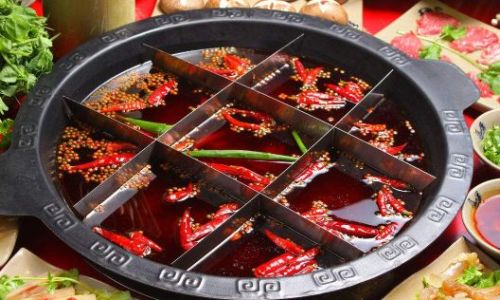
Leafy Greens
- Napa Cabbage: Mild and crisp, it holds up well in broth.
- Spinach: Wilted spinach adds earthy sweetness.
- Bok Choy: Baby bok choy cooks quickly and retains a satisfying crunch.
Root Vegetables
- Potatoes: Thinly sliced potatoes cook in minutes; sweet potatoes offer a sweeter twist.
- Daikon Radish: Sliced into rounds, daikon becomes tender and mellow.
- Carrots: Julienned or thinly sliced, they add a hint of sweetness.
Mushrooms
- Enoki Mushrooms: Delicate and slightly crunchy, they’re often bundled together.
- Shiitake Mushrooms: Sliced or whole, their meaty texture and smoky flavor are unbeatable.
- Oyster Mushrooms: Plump and juicy, they absorb broth like sponges.
Other Vegetables
- Lotus Root: Crisp and slightly sweet, sliced lotus root adds a refreshing crunch.
- Kohlrabi: Similar to broccoli stems but milder, it’s excellent in spicy broths.
- Corn on the Cob: Halved or quartered, sweet corn adds a pop of color and flavor.
Noodles and Starches: The Fillers
No hot pot is complete without something to soak up the broth. Consider:
- Udon Noodles: Thick, chewy Japanese noodles.
- Rice Noodles: Vermicelli or flat rice noodles for a lighter option.
- Glass Noodles (Cellophane Noodles): Made from mung bean starch, they’re slippery and fun to slurp.
- Hand-Pulled Noodles: A Chinese specialty, these stretchy noodles are a showstopper.
- Potatoes or Taro Root: Cut into chunks, they thicken the broth as they cook.
Dipping Sauces and Condiments
The right sauce elevates ingredients to new heights. Mix and match bases like soy sauce, sesame oil, or peanut butter with aromatics:
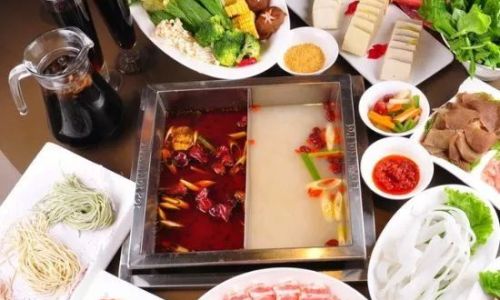
- Sichuan-Style Sauce: Minced garlic, chili oil, scallions, and sesame seeds.
- Japanese Ponzu: Citrusy soy sauce with yuzu or lemon.
- Thai Peanut Sauce: Creamy peanut butter, lime juice, and chili flakes.
- Korean Ssamjang: Fermented bean paste mixed with gochujang (chili paste).
Don’t forget fresh herbs like cilantro, Thai basil, or mint, and garnishes like crushed peanuts or sesame seeds.
Regional Specialties: Exploring Global Flavors
Hot pot varies wildly by region, each with unique ingredients:
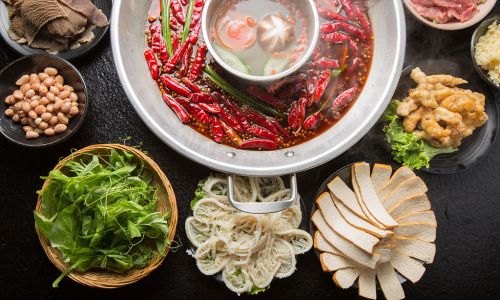
- Sichuan Hot Pot (China): Duck intestines, lotus root, and blood tofu.
- Japanese Shabu Shabu: Thinly sliced Wagyu beef, shirataki noodles, and ponzu dipping sauce.
- Korean Army Stew (Budae Jjigae): Spam, ramen noodles, and American cheese for a post-war fusion dish.
- Vietnamese Lẩu: Lemongrass, tomato, and beef balls in a clear broth.
Pro Tips for Hot Pot Perfection
- Prep Ahead: Slice meats and veggies before guests arrive to streamline cooking.
- Cooking Order: Start with meats to flavor the broth, followed by seafood, then vegetables, and save noodles for last.
- Timing is Key: Overcooking turns ingredients mushy. Use a slotted spoon to fish out items promptly.
- Customization: Let guests assemble their own bowls with preferred ingredients and sauces.
- Leftovers: Use leftover broth for noodles or rice the next day.
Health Considerations
For a balanced meal:
- Lean Proteins: Opt for chicken breast or fish over fatty meats.
- Fiber-Rich Veggies: Load up on mushrooms, spinach, and daikon.
- Low-Sodium Broth: Use homemade or low-sodium store-bought options.
- Moderation: Enjoy richer ingredients like fried tofu or noodles in moderation.
Conclusion: The Joy of Sharing
Hot pot is more than a meal—it’s a celebration of togetherness. The clatter of chopsticks, the sizzle of ingredients, and the laughter around the table create memories that linger long after the broth is gone. By curating a mix of proteins, vegetables, and starches, you ensure every bite offers a symphony of flavors and textures. Whether you prefer the fiery kick of Sichuan pepper or the delicate sweetness of seafood, the perfect hot pot ingredients await your next gathering. So gather your loved ones, fire up the stove, and let the culinary adventure begin!
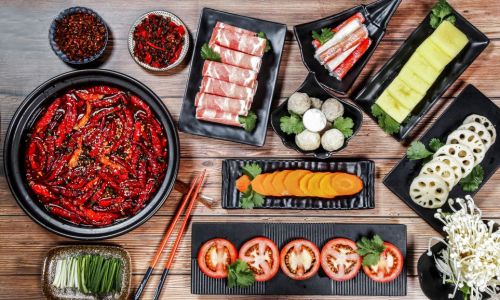
Word Count: 1,820


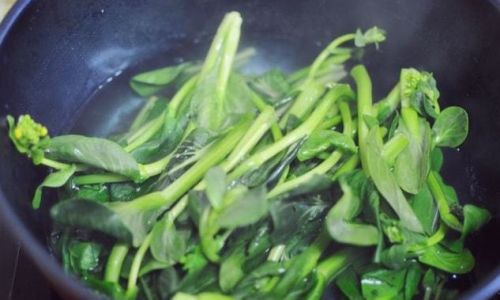

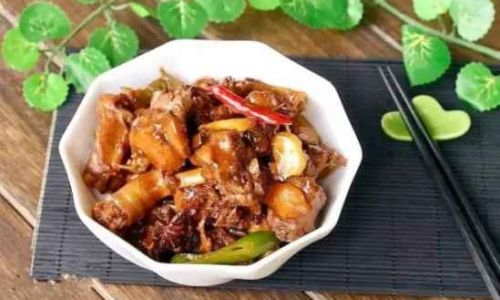
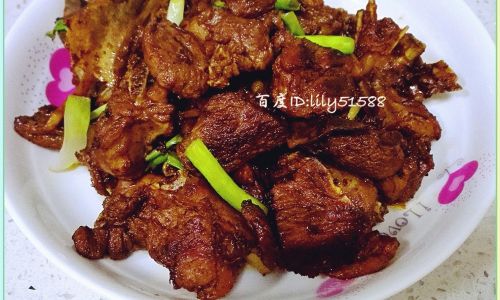
0 comments